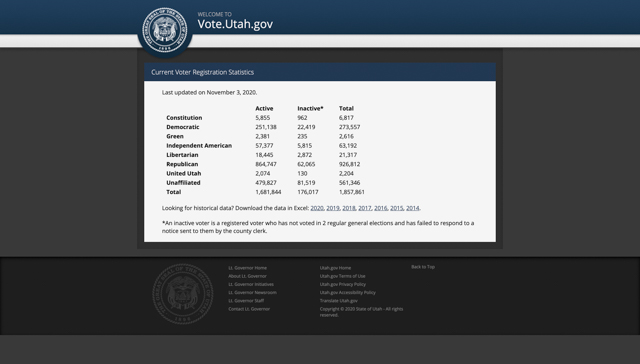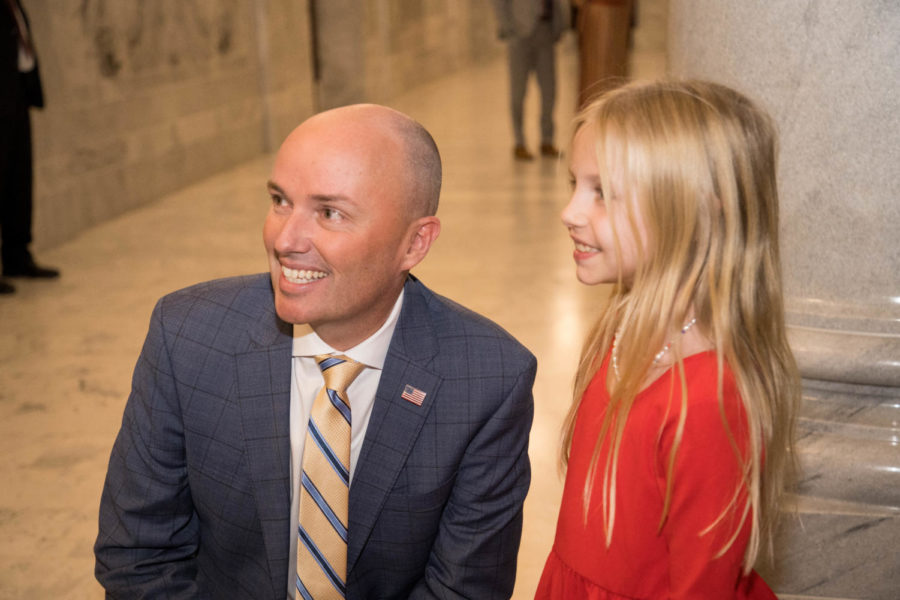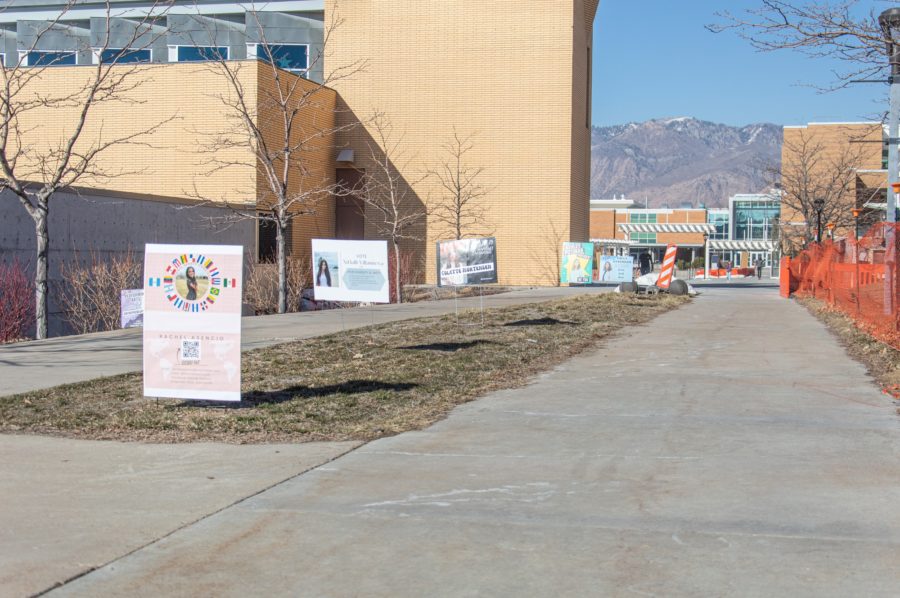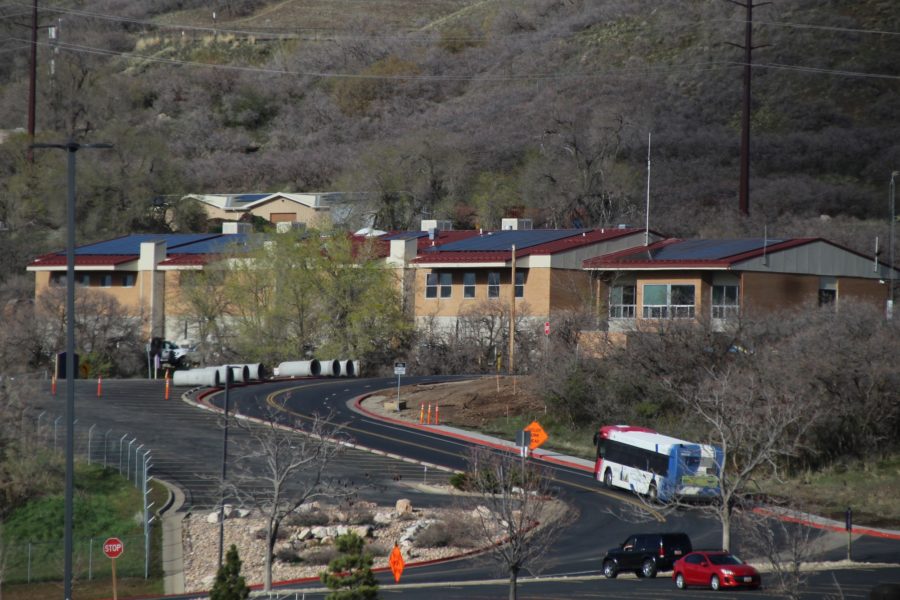These numbers are current as of 10:40 a.m. on Nov. 4.
More Utah residents have officially voted in the 2020 general election than did in 2016.

Utah State Elections reported at 5 p.m. on Nov. 3, 2020, that 1,214,000 ballots had already been processed. At that time, Weber County had processed over 71,000 ballots.

In 2016, almost 1,992,000 people were eligible to vote in Utah. Almost 1,405,000 of those people were registered to vote. However, only 1,152,000 people voted in the general election that year.
In 2020, almost 1,858,000 people are registered to vote. Almost 1,682,000 of those registered are considered active.
In 2016, Governor Gary Herbert and Lt. Gov Spencer Cox received 750,850 votes, or 66.7 percent. Mike Weinholtz and Kim Bowman received almost 323,350 votes, or 28.7 percent.
In 2020, Herbert did not run, but Cox did. Cox ran with Deidre Henderson and Chris Peterson ran with Karina Brown.
This year, Cox received around 653,682 votes, or 63.7 percent. Peterson received about 315,473 votes, or 30.8 percent, as of 5:34 a.m. on Nov. 4. However, many counties were still counting ballots.
In 2016, the U.S. House District 1 was won by Rob Bishop, with almost 183,000 votes, or 65.9 percent. Peter Clemens ran against him as the Democratic candidate, and he received almost 73,400 votes, or 26.4 percent.
In 2020, Bishop is not running for re-election.
House District 1 nominees include Blake Moore, on the ballot this year for Republicans, and Darren Parry, who is representing the Democrats. So far, Moore has received over 172,656 votes, or 68.2 percent, and Parry has received over 80,506 votes, or 31.8 percent. This race was called by the New York Times for Blake Moore as the winner.
House District 2 was won in 2016 by Rep. Chris Stewart. Stewart received about 170,500 votes, or 61.6 percent, and his Democratic opponent, Charlene Albarran, received almost 93,800 votes, or 33.9 percent.
This year, Stewart is running again as the incumbent and has received over 168,000 votes, or 61.6 percent, so far. His Democratic opponent is Kael Weston, who has received 94,229 votes, or 34.5 percent. This race was called by the New York Times with Stewart as the winner.
House District 3 was won in 2016 by Jason Chaffetz with almost 209,600 votes, or 73.5 percent. His Democratic opponent was Stephen Tryon, who received over 75,700 votes, or 26.5 percent.
Chaffetz resigned from Congress in 2017, and John Curtis was elected during a special election.
In 2020, Curtis is running as the incumbent. He has received 182,019 votes, or 68.5 percent. Devin Thorpe Is running as the Democratic nominee and has received over 72,924 votes, or 27.5 percent. The New York Times called Curtis as the winner for District 3.
Utah’s last U.S. House District is District 4. This is considered a key race this year.
In 2016, Mia Love won with almost 147,600 votes, or 53.8 percent. The Democratic nominee who ran against her was Doug Owens, who received over 113,400 votes, or 41.3 percent.
Love was defeated in 2018 by Ben McAdams, the current incumbent, by only 694 votes.
McAdams is running again this year and has so far received almost 109,880 votes, or 49.5 percent. Running against him is Burgess Owens, who has received 102,115 votes, or 46 percent. The projected winner of District 4 is not expected to be decided until later this week.
Many counties are still counting ballots and will be doing so throughout the week as mailed ballots continue to be delivered to elections offices.
The numbers in this story were current as of 10:40 a.m. on Nov. 4.




















